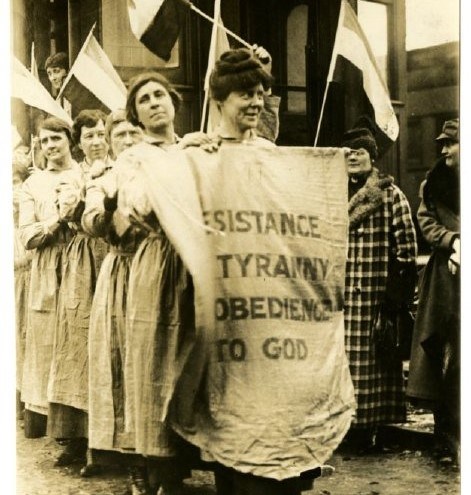Part of a series of articles titled Teaching Justice.
Article
Teaching Justice: The Prison Special and the Courage to Speak Out

Harris & Ewing, photographer. National Woman's Party collection, The Library of Congress
Grade Level
This activity is designed for fifth grade students (age 10-11).
Anti-Bias Objectives
Justice
Students will identify figures, groups, events, and a variety of strategies and philosophies relevant to the history of social justice around the world.
Action
Students will make principled decisions about when and how to take a stand against bias and injustice in their everyday lives and will do so despite negative peer or group pressure.
Guiding Question
When have you needed courage to stand up for what is right?
Suffragists who protested at the White House for the right to vote in 1917 were arrested for "obstructing traffic." It was a minor charge meant to convince the women to stop protesting. Instead, the suffragists kept showing up. From June through November 1917, more than 150 women were arrested. They refused to pay the court-orderd fine and were sentenced to jail. In the photo, you see Lucy Burns in her prison uniform in front of her prison cell in the Occoquan Workhouse. She served more time in prison than any other American woman suffragist. She was a leader of the National Woman's Party who returned to the picket line again and again.

National Woman's Party collection
Vocabulary
obstruct: to block something or to be in the way
suffrage: the right to vote
suffragist: a person who works for the right to vote, especially for women
tyranny: cruel, oppressive control by a government or leader
In 1919, the National Woman's Party organized another campaign to convince Americans that women should have the right to vote. Many of the women who had gone to jail for picketing the White House set out across the country by train to tell people about their experience. They wore dresses that looked like the clothes they had been forced to wear in prison. They called their trip the "Prison Special." At each stop, they gave speeches to crowds and shared stories about the terrible things that happened to them.
Think About It
- Why do you think the suffragists continued to protest even after the police started arresting them?
- The banner that Lucy Burns is holding in this picture is making an argument that even though the suffragists were arrested and punished for protesting, what they were doing was good and right. Do you agree? Explain your answer.
- Think of someone courageous. It can be a famous person, someone from history, or someone you know. What did they do that required courage?
Additional Resources
NPS Links
Lucy Burns people page
Article Series: "Democracy Limited" The Prison Special
Suffrage in 60 Seconds video: The Night of Terror
Other Links
Unladylike2020 video:Bessie Coleman
"History Moves With Us" by Charles E. Cobb, Jr. and Hasan Kwame Jeffries in Teaching Tolerance magazine
Last updated: June 25, 2021
